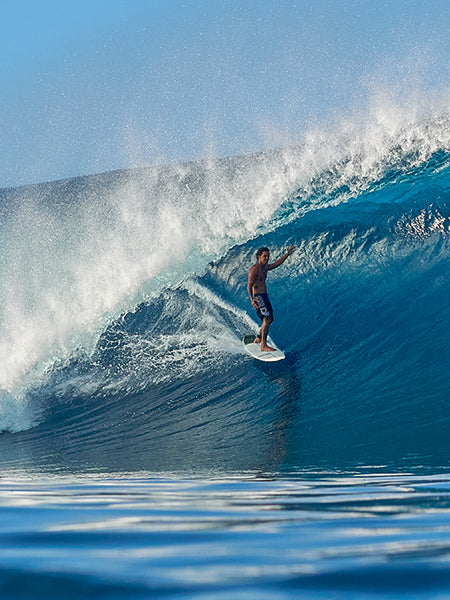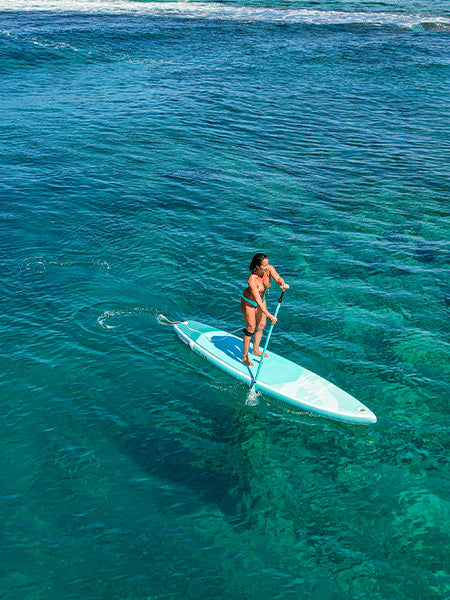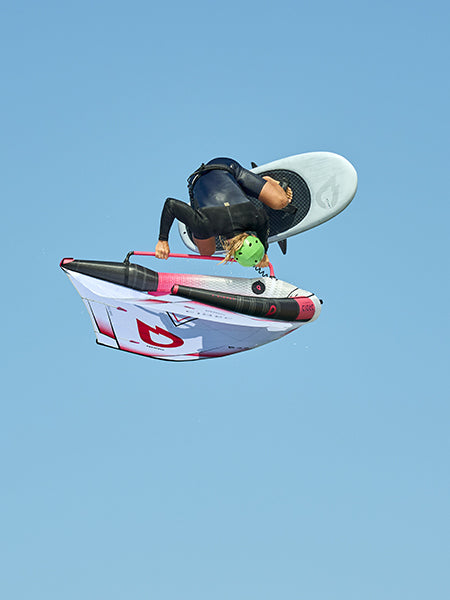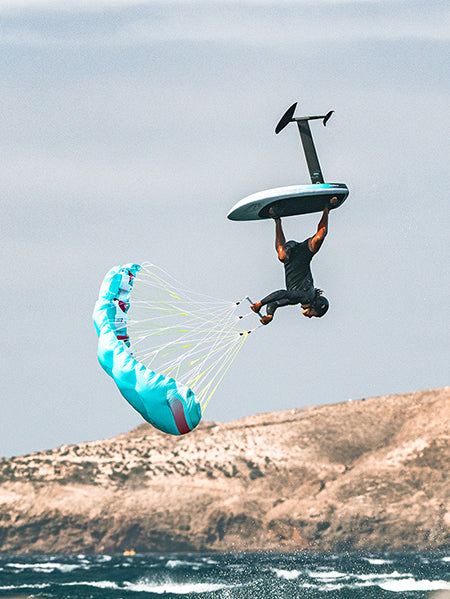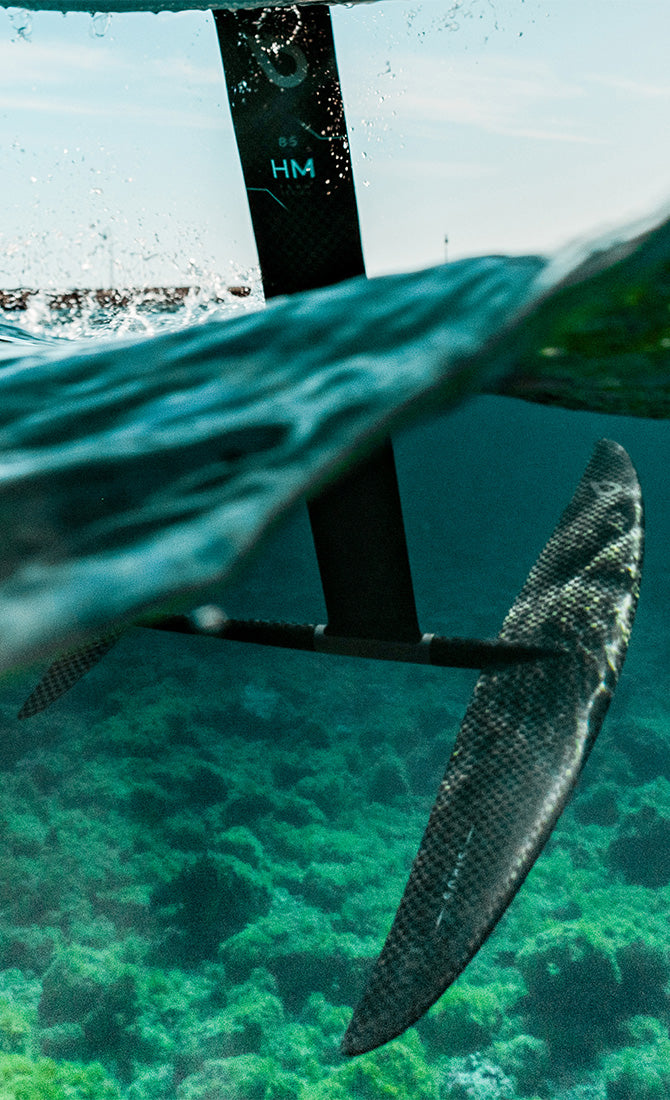One hand jump
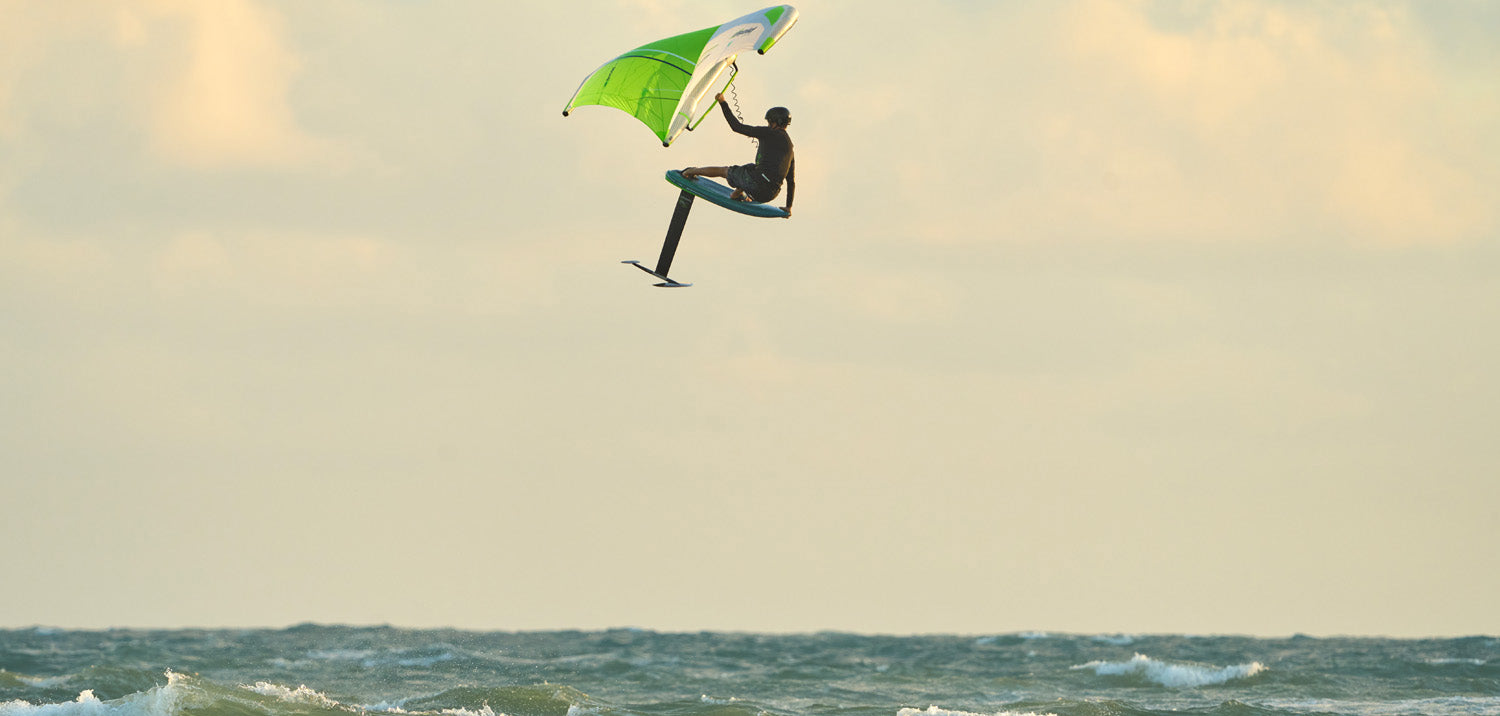
The doorway to an abundance of grabs for hyper-stylish and modern tricks, the one-hand jump is a maneuver both simple to attempt and incredibly enjoyable to execute, as explained in detail by Malo here.
“This trick, not to be confused with the one-handed harness jump, can be attempted in various situations. You can perform it facing a wave or during an air in the wave. The only requirement for executing this move is to be equipped with a boom on your wing. Other than that, anyone with a minimum level of expertise and any equipment can do it! So, let’s see how right now.”
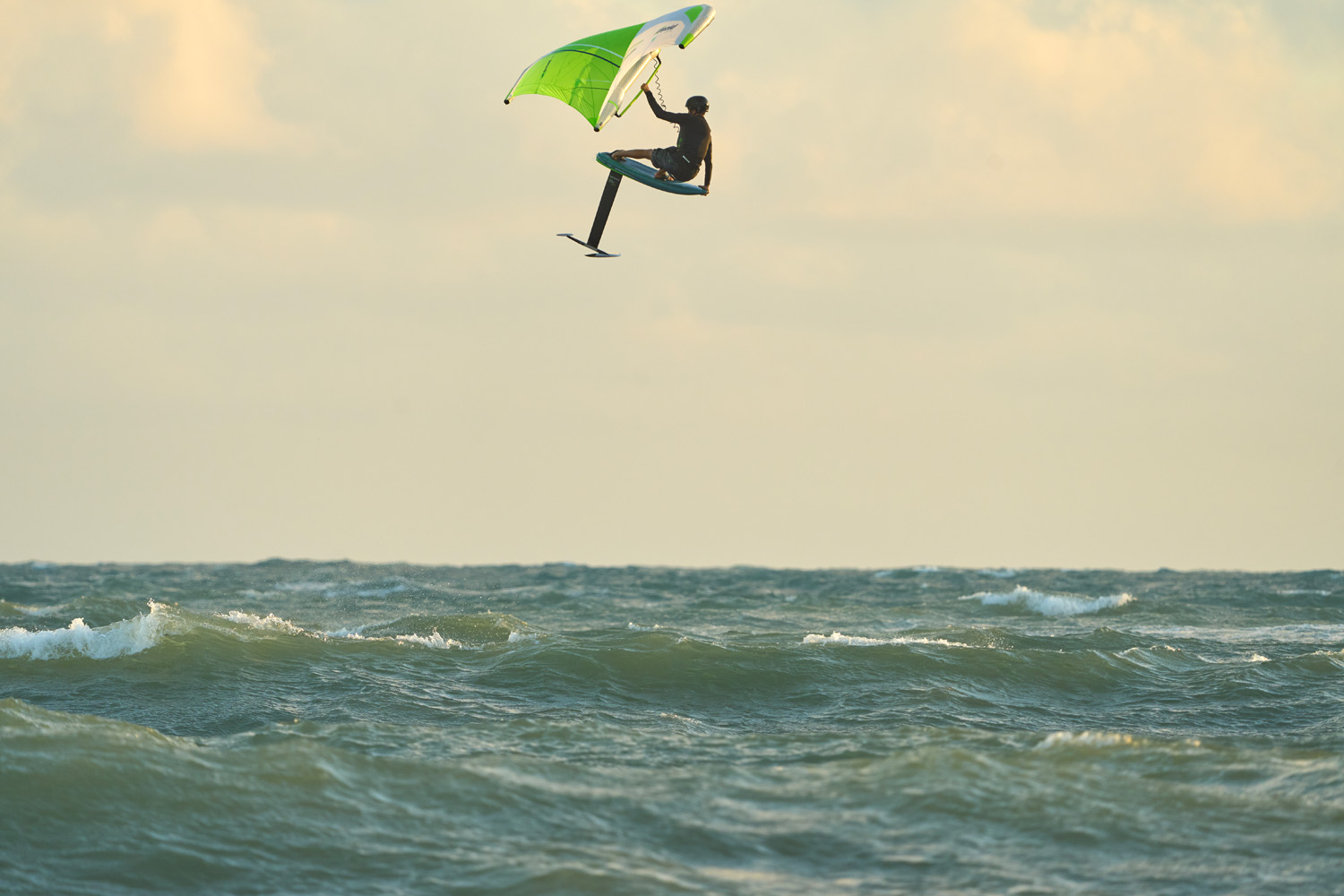
Preparing for Your Jump
“So, you’re in the water, conditions are good, wind neither too strong nor too light, you’re warmed up and helmeted, ready to send it. Firstly, you need to pick up speed. It’s essential to go relatively fast to have a good pop and rise more easily into the air. Once at a good speed, identify a good section to launch (wave, bump, gust…), and that’s where the trick begins. After identifying where you’ll jump, you quickly need to prepare for the jump by moving your rear hand to the middle of the boom. This way, you should be able to still ride by releasing your front hand without getting yanked by the wing but without losing power in the wing either. However, don’t release the hand right away; you first need to jump.”
Executing the Jump
“Now that you’re in position to jump, well, there’s nothing left to it! You’ll simply perform your pop the same way as a simple jump, sending the board straight and across the wind. Still, remember to pull firmly with your rear hand to compensate for the lack of power in the wing because your rear hand is in the middle of the boom. Now, if you’ve done your pop well and pulled properly, you should be rising into the air.”
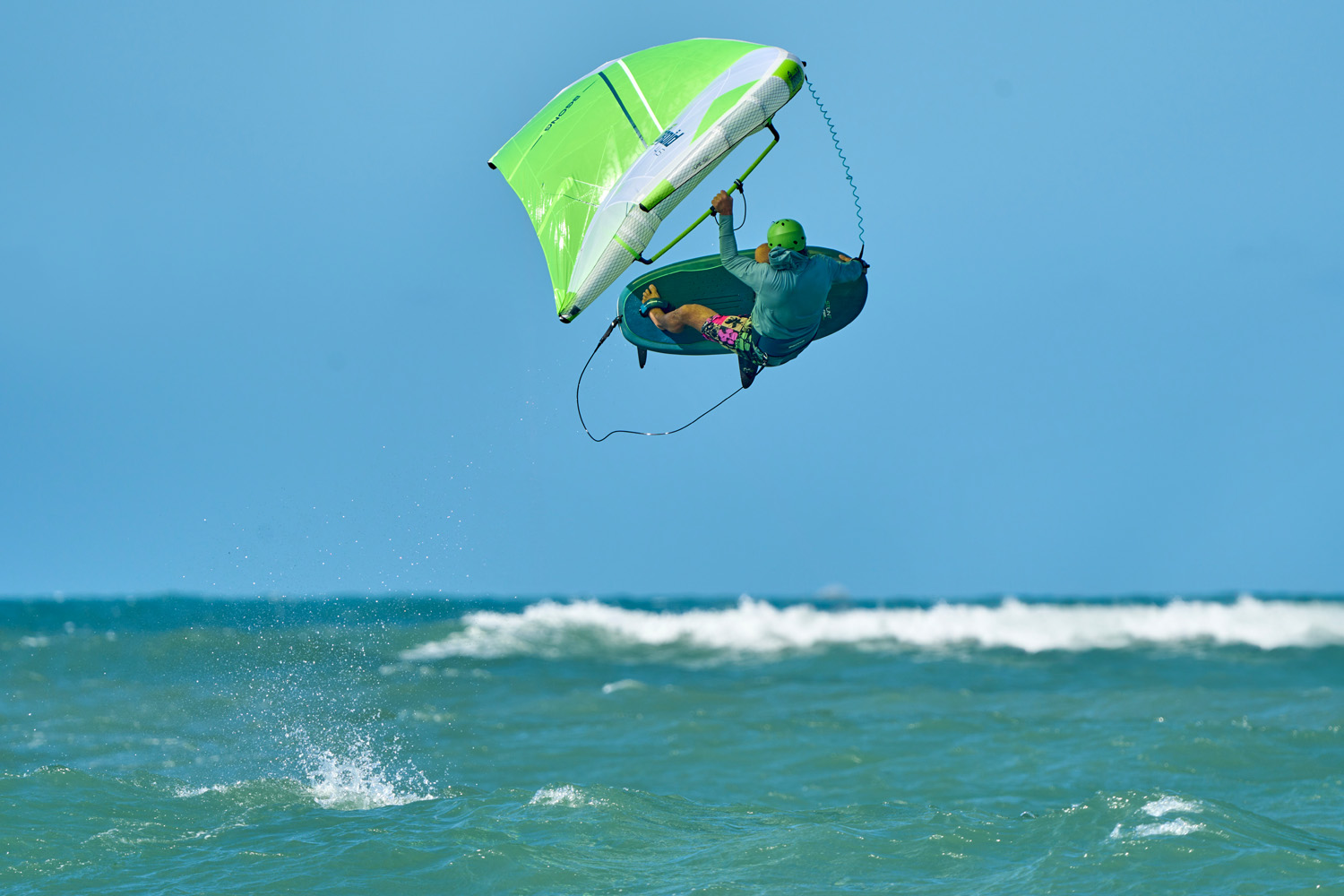
One-Hand Control
“Now is when the most enjoyable part of the trick begins. Until now, you had both hands on the boom; well, now you can release your front hand. You can start by simply taking it off and putting it back to get used to being in the air and jumping this way. This is also the moment when you’ll see if your hand is well-positioned on the boom or not. If it’s too far forward, the wing won’t have any traction, and you’ll fall like a stone because it will go neutral to the wind. And if it’s too far back, the wing will suddenly open and carry you downwind. So, it’s up to you to gauge. For my part, I put it in the middle of the GONG logo on the center strut 😉 To gain more height, you can try letting the wing pull you upward by slightly relaxing your rear arm and letting the wing open up to the wind.”
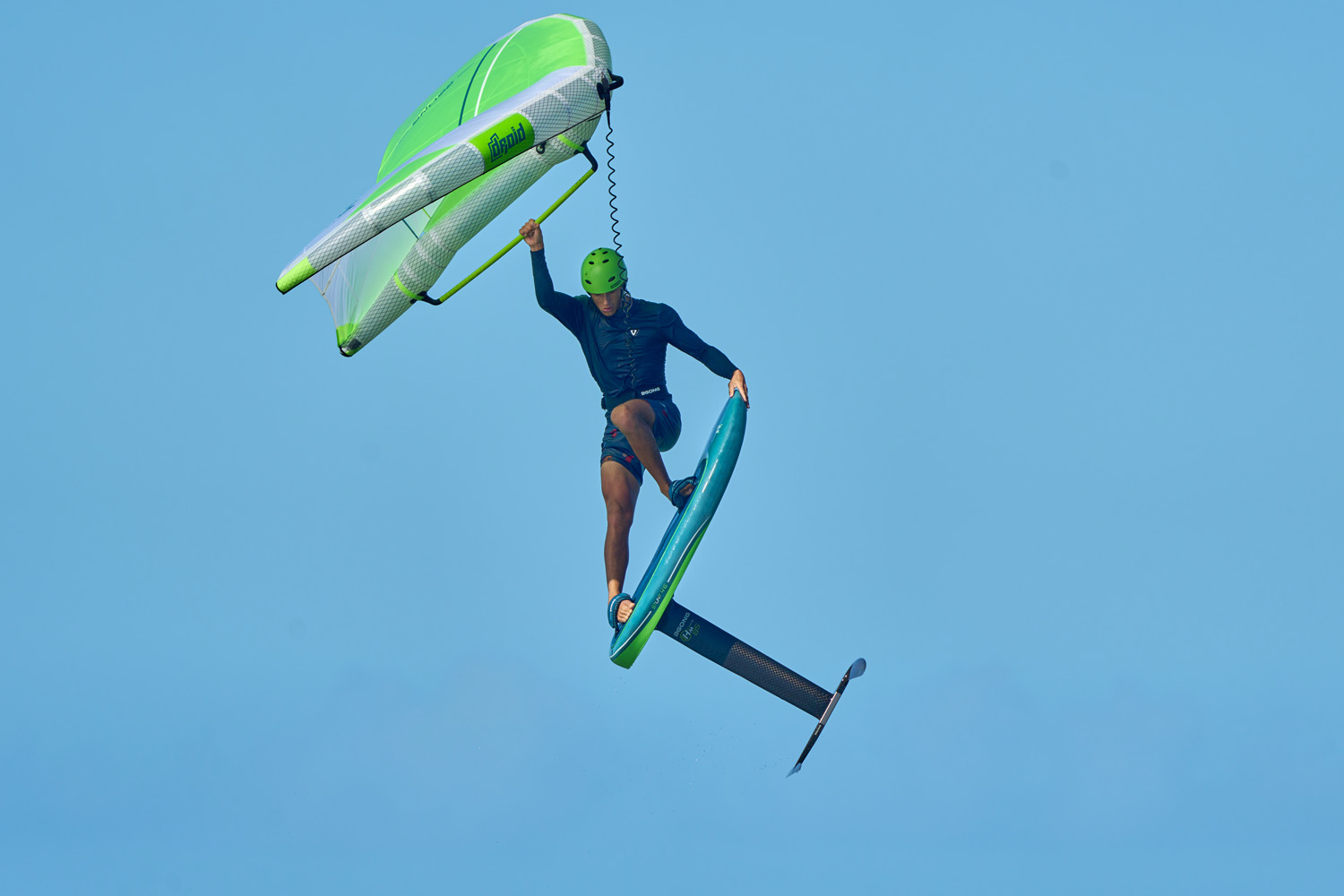
Managing the Landing
“As soon as you’ve released and put your hand back on the boom, either you’ll control the descent by keeping your rear hand where it is, or if you have time, you can place it back in the air to its initial navigation position. It all depends on the jump height and the speed of your movement. After that, you just need to cushion the landing by staying well flexed and straight above the board while pulling in to create support with the wing. Then all that’s left is to pump with the foil and the wing to take off again!”
Advice for Grabbing
“So, you’ve done your first One-Hand Jump! Now the game is to do what you want with your free hand: a shaka, a hello to a friend, fix your hair… But above all, grab the board! A little advice if you want to grab: don’t try to reach for the board with your hand, but rather bring the board to your hand by pulling on your legs; that way, no need for flexibility 😉 Now that you know how to do a One-Hand Jump, all that’s left is to hit the water and unleash your creativity! Don’t forget your helmet, of course.”

